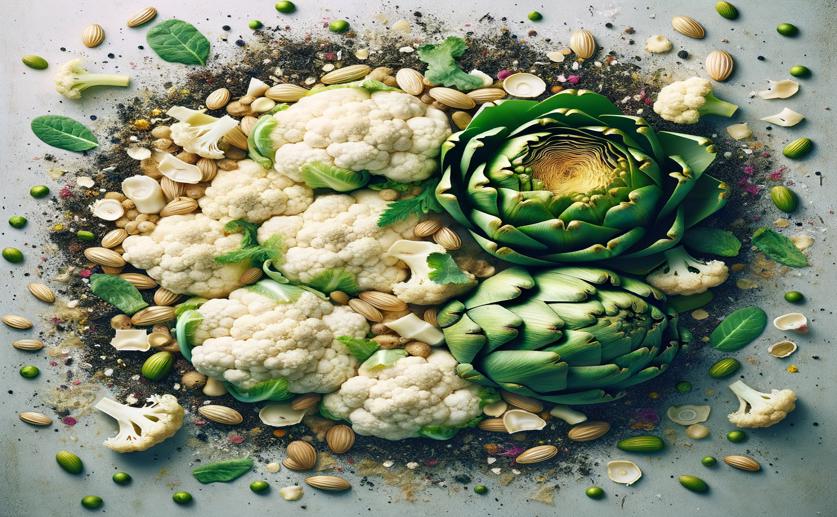
Cauliflower and Artichoke Waste Boosts Seed Germination and Growth
Jim Crocker
20th August, 2024

Image Source: Natural Science News, 2024
Key Findings
- The study by Sapienza University of Rome found that enzymatic hydrolysates from cauliflower and artichoke wastes can be used as plant biostimulants
- Cauliflower leaf and flower hydrolysates had high concentrations of free amino acids, while artichoke stems were rich in asparagine, glutamine, and aspartic acid
- Applying artichoke hydrolysate at 0.28 g L-1 significantly improved seed germination in alfalfa, crimson clover, and durum wheat, while cauliflower hydrolysate enhanced corn germination
AgricultureBiochemPlant Science
References
Main Study
1) Hydrolysates from cauliflower and artichoke industrial wastes as biostimulants on seed germination and seedling growth: a chemical and biological characterization.
Published 19th August, 2024
https://doi.org/10.1002/jsfa.13813
Related Studies
2) Developing Biostimulants From Agro-Food and Industrial By-Products.
3) Seed priming with protein hydrolysate promotes seed germination via reserve mobilization, osmolyte accumulation and antioxidant systems under PEG-induced drought stress.
4) Peptides from Cauliflower By-Products, Obtained by an Efficient, Ecosustainable, and Semi-Industrial Method, Exert Protective Effects on Endothelial Function.



 8th August, 2024 | Jenn Hoskins
8th August, 2024 | Jenn Hoskins